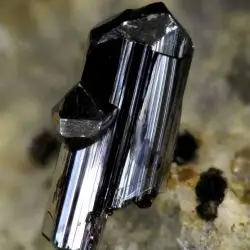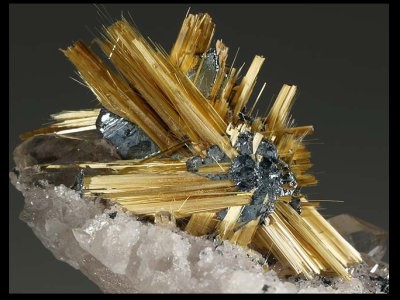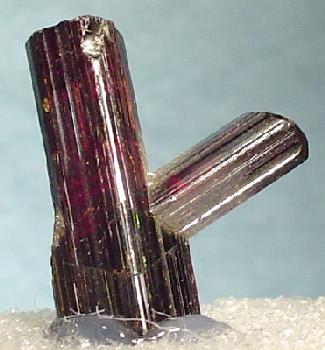
Rutile is a naturally occurring mineral found in various rock formations and mineral deposits around the world. It is known for its distinctive appearance, characterized by bright golden or red needles that grow in the shape of stars inside other gemstones, such as quartz and moonstone.
Physical Characteristics of Rutile
Rutile, also known as titanium dioxide, has a tetragonal crystal structure. Its microscopic needles are formed due to the presence of titanium in its composition. These needles can vary in color, from golden and red tones to yellows and blacks, which gives it its aesthetic appeal.
Industrial Applications
Rutile is a mineral of great importance in various industries. Its high titanium dioxide content makes it a valuable component in the manufacture of paints, plastics, ceramics and paper. In addition, it is also used in the aerospace and electronics industry due to its exceptional electrical and thermal properties.

Geotherapeutic properties of Rutile
Rutile has sparked growing interest in the geotherapy community due to its purported healing properties. Although research in this area is limited, this mineral is believed to possess benefits for people’s physical and emotional health.
Energy Balance and Healing
Rutile is said to help balance the flow of energy in the body, releasing blockages and promoting greater internal harmony. This energy harmonization can facilitate the body’s natural healing process and improve overall well-being.
Stress and Anxiety Reduction
Some geotherapy practitioners suggest that rutile may have a calming effect on the mind and nervous system. It is believed that its vibrational energy favors the reduction of stress, anxiety and emotional negativity.

Stimulation of Creativity and Concentration
Rutile is also associated with stimulating creativity and improving mental focus. Its energy is believed to favor mental clarity and focus, which can be beneficial for those looking to increase their productivity and creativity.
Use of Rutile in Therapies
Geotherapy with this mineral can be performed in various ways, such as through the use of jewelry containing this mineral, such as necklaces or bracelets. It can also be applied directly to specific energy points on the body, as part of crystal therapy sessions.
Precautions and Considerations
Although rutile is considered generally safe for use in geotherapy, it is essential to take some precautions. It is always advisable to consult with a healthcare professional before incorporating any complementary therapy into the treatment of diseases or medical conditions.

Conclusions
In short, rutile is an intriguing mineral that stands out for its beauty and potential in geotherapy. While more research is still needed to support its purported healing properties, its use as a therapeutic adjunct continues to gain popularity in the quest for greater emotional balance and overall well-being.
Towards an Understanding of Rutile Potential
The future of geotherapy and its relationship with rutile is promising. With continued advances in science and medicine, it is possible that more evidence about the therapeutic benefits of this fascinating mineral will be revealed in the future.
In conclusion, rutile deserves further attention and study by the scientific community and the geotherapy industry. Its unique physical characteristics, along with its possible geotherapeutic properties, make this mineral a subject of interest and curiosity. As our understanding of minerals and their relationship to human health evolves, this mineral could play a crucial role in people’s holistic well-being. Until then, its natural beauty will continue to amaze and captivate all lovers of minerals and geotherapy.
For more articles like this, click here.
